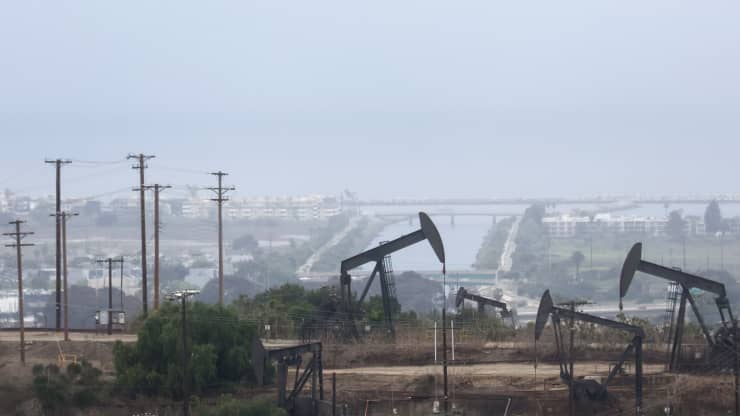Oil prices dropped early on Monday as investors braced for this week’s meeting of officials from OPEC and other top producers on supply adjustments.
Brent crude futures dropped 63 cents, or 0.6%, to $103.34 a barrel by 0000 GMT. U.S. West Texas Intermediate crude was at $97.87 a barrel, down 75 cents, or 0.7%, after hitting a session low of $97.55 when trading commenced in Asia.
Both contracts rebounded more than $2 a barrel on Friday as risk appetite improved among investors. However, both Brent and WTI ended July with their second straight monthly losses for the first time since 2020, as soaring inflation and higher interest rates raise fears of a recession that would erode fuel demand.
ANZ analysts said fuel sales to drivers in Britain are waning, while gasoline demand remains below its five-year average for this time of the year. Reflecting this, analysts in a Reuters poll reduced for the first time since April their forecast for 2022 average Brent prices to $105.75 a barrel, and to $101.28 for WTI.
The Organization of the Petroleum Exporting Countries (OPEC) and allies including Russia, a group known as OPEC+, will meet on Wednesday to decide on September output.
Two of eight OPEC+ sources in a Reuters survey said a modest increase for September will be discussed at the Aug. 3 meeting, while the rest said output would likely be held steady.
The meeting comes after U.S. President Joe Biden visited Saudi Arabia last month.
“While President Biden’s visit to Saudi Arabia produced no immediate oil deliverables, we believe that the Kingdom will reciprocate by continuing to gradually increase output,” RBC Capital analyst Helima Croft said in a note.
The start of August sees OPEC+ having fully unwound record output cuts in place since the Covid-19 pandemic took hold in 2020.
The group’s new secretary general Haitham al-Ghais reiterated on Sunday that Russia’s membership in OPEC+ is vital for the success of the agreement, Kuwait’s Alrai newspaper reported.
Meanwhile, U.S. oil production continued to climb as the rig count rose by 11 in July, increasing for a record 23rd month in a row, data from Baker Hughes showed.

